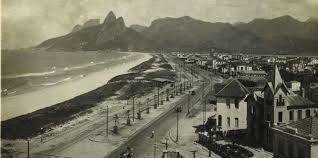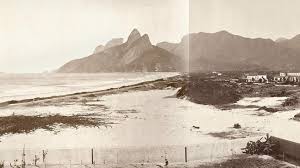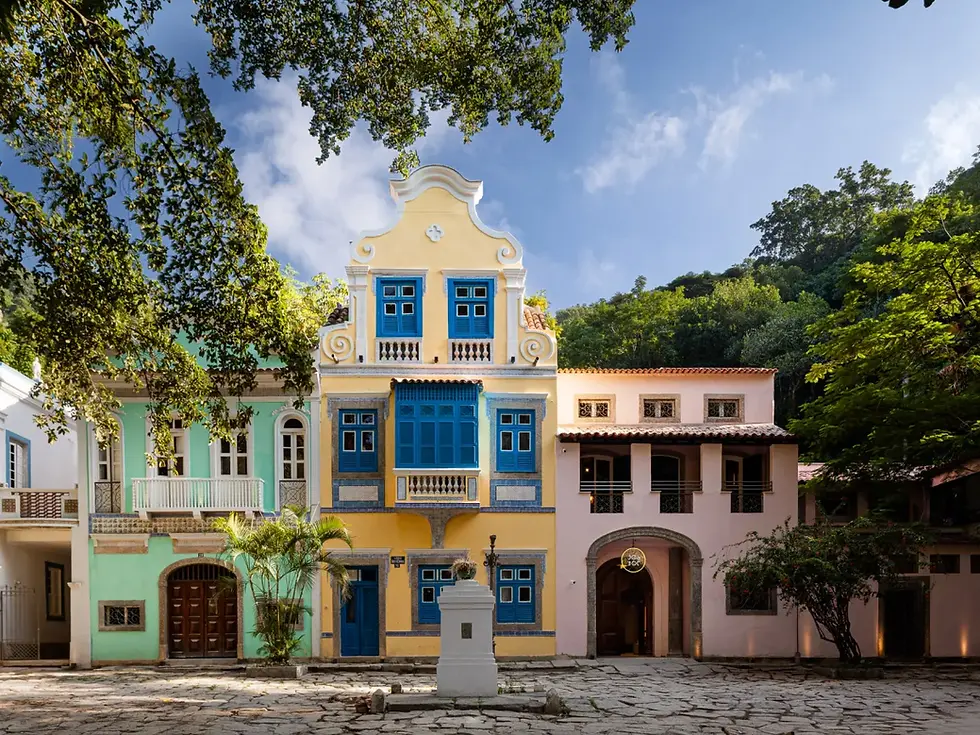Ipanema Beach
- Frederico Aversa Masson
- Oct 31, 2024
- 4 min read
Updated: Nov 4, 2024

Ipanema Beach (Praia de Ipanema in Portuguese) is a beach located in the Ipanema neighborhood, South Zone of Rio de Janeiro. With a total length of 3km, it is one of the most visited sites in Rio de Janeiro and Brazil, having been chosen as the second-best beach in the world in 2024 by the Lonely Planet travel guide.
Before the arrival of the Portuguese colonizers, the Ipanema and Leblon neighborhoods were inhabited by Tamoio natives and were then called Jaboracyá and Kariané, respectively (both Tupi names). Due to the limited presence of the Portuguese in the Guanabara Bay during the initial years of colonization, the French launched expeditions to the region and eventually established France Antarctique with the help of the Tamoios, turning the Rio de Janeiro region into a French colony. In the 1560s, the Portuguese attacked France Antarctique with a navy fleet led by Estácio de Sá, targeting French forts and ships. The Portuguese eventually reconquered the Guanabara Bay, and with Estácio de Sá being appointed Governor of the region, they intensified their colonization efforts, leading to the foundation of the city of São Sebastião do Rio de Janeiro. As retaliation for the unwavering support the Tamoios provided to the French, Portuguese aggressiveness towards these tribes increased significantly, resulting in a drastic reduction in their presence in what are now the Ipanema and Leblon neighborhoods.
From the 16th century until the 1890s, Ipanema was an isolated and mostly unexplored region of Rio de Janeiro, with a limited presence of Indigineous communities and some commercial activities. It was only in 1894 that José Antônio Moreira — the Count of Ipanema — founded the Villa Ipanema in the area that comprises the neighborhood today. Moreira was a merchant and entrepeneur of the Brazilian Empire who owned the land; his noble title is named after the Ipanema River, which runs through Sorocaba, São Paulo -- where the Count established a metal industry. This river is named after the Tupi expression "'y panema," meaning "useless river" (it can also be translated to "yellow river," as "panema" can mean both "useless' and "yellow").
The Count of Ipanema subdivided his land into approximately 40 plots and built roads and squares to encourage occupation. As the plots were purchased, Villa Ipanema began to urbanize and observe population growth. With the expansion of Rio de Janeiro from the Central Region to the South during the 1900s, this urbanization process intensified — especially due to the construction of tram lines connecting Ipanema to other regions in 1902 — and the village became a fully-developed neighborhood. The neighborhood's growth was also marked by the construction of the Our Lady of Peace Church and the Franciscanos School in the 1910s. Initially, Ipanema's streets were named after the Count's family members; however, in 1922, to celebrate the 100th anniversary of Brazil's independence, the streets were renamed after heroes of the Brazilian history — resulting in some well-known street names to this day, such as Garcia D'Ávila, Visconde de Pirajá, and Barão da Torre.
During the 1960s, the neighborhood experienced significant growth. With the replacement of traditional houses by high-rises, Ipanema's population density increased exponentially, along with real estate speculation, making Ipanema one of the most expensive neighborhoods in Brazil. It was also during this decade that Ipanema gained its status as a vanguard neighborhood: from the emergence of cultural movements to becoming a place of resistance against Brazil's military dictatorship to an important region for the LGBTQ+ movement in Rio, Ipanema is widely recognized as a hub for political and social ideas and stances.
Ipanema is notably considered the birthplace of Bossa Nova. During the 1950s and 1960s, middle- and high-income young artists gathered in bars and apartments in Ipanema, creating a sophisticated musical genre that combined samba and American jazz influences, characterized by intimate lyrics often sung in a smooth voice. This genre represented many of the modern ideals shared among intellectuals and the optimism of the youth regarding the country's future during President Juscelino Kubistchek's administration. Ipanema Beach also served as inspiration for the most popular Bossa Nova (and perhaps Brazilian) song of all time: "Garota de Ipanema." The song's composers, Vinícius de Moraes and Tom Jobim, were inspired by a woman who would always pass by them on her way from Ipanema Beach, becoming their muse. The song also played a pivotal role in popularizing Bossa Nova in many different countries — especially in the United States, due to the English version "The Girl from Ipanema," recorded by Frank Sinatra and Tom Jobim. Ipanema was also significant in the creation of Tropicalia, a musical and cultural movement that sought to find a Brazilian identity by blending various genres, ideals, and influences present in Brazil.
Today, Ipanema is one of the most luxurious regions in Brazil, ranking as the 5th most expensive neighborhood in the country. Alongside Leblon, Ipanema is famous for its nightlife and vibrant, bohemian culture, beach activities, stunning views and sunsets, artistic production, and boardwalk "quiosques," making it one of the most sought-after destinations for tourists visiting Rio.
Sources & References
Ipanema Inn. (n.d.). Ipanema: uma das melhores praias do mundo. Retrieved from https://blog.ipanemainn.com.br/ipanema-uma-das-melhores-praias-do-mundo/
Comandante Nobre. (n.d.). 10 curiosidades sobre a praia de Ipanema. Retrieved from https://www.comandantenobre.com.br/10-curiosidades-sobre-a-praia-de-ipanema/
4Fly RJ. (n.d.). Praia de Ipanema: história, curiosidades e dicas de passeio. Retrieved from https://4flyrj.com.br/artigo/praia-de-ipanema-historia-curiosidades-e-dicas-de-passeio/
Boro Godoi. (n.d.). O surgimento de Ipanema. Retrieved from https://www.borogodoishere.com/osurgimentodeipanema/?srsltid=AfmBOork4hL3fICESusXx1V23cm3Win5ujxG2LrqPO7mlqJWitsRzHUv
Caminhos Languages. (n.d.). A little bit of Ipanema's history. Retrieved from https://caminhoslanguages.com/br/blog/a-little-bit-of-ipanemas-history/
Olá Rio. (n.d.). Ipanema 130 anos: uma história de beleza e cultura efervescente. Retrieved from https://orlario.com.vc/homenagem/ipanema-130-anos-uma-historia-de-beleza-e-cultura-efervescente/
CBN. (2024, April 26). Ipanema faz 130 anos: saiba fatos históricos e curiosidades do bairro. Retrieved from https://cbn.globo.com/rio-de-janeiro/noticia/2024/04/26/ipanema-faz-130-anos-saiba-fatos-historicos-e-curiosidades-do-bairro.ghtml
Biblioteca Nacional. (2015, April). Rio 450 anos: bairros do Rio - Ipanema. Retrieved from https://antigo.bn.gov.br/acontece/noticias/2015/04/rio-450-anos-bairros-rio-ipanema
O Globo. (n.d.). Quem são os personagens que dão nome às ruas de Ipanema? Retrieved from https://oglobo.globo.com/rio/bairros/quem-sao-os-personagens-que-dao-nome-as-ruas-de-ipanema-21231012
Redesina. (n.d.). Diversas ruas de Ipanema tiveram seus nomes alterados ao longo do tempo. Retrieved from https://redesina.com.br/928/#:~:text=Diversas%20ruas%20de%20Ipanema%20tiveram,Silva%2C%20que%20deixou%20de%20existir.
Images Credits
Image 1: Retrieved from https://judicearaujo.com.br/blog/morar-em-ipanema/
Image 2: Retrieved from https://www.kayak.com.br/Rio-de-Janeiro-Hoteis_Ipanema.N213181.24146.hotel.ksp
Image 3: Acervo Digital da Biblioteca Nacional | Augusto Malta. Retrieved from https://www.bbc.com/portuguese/geral-53358509
Image 4: Acervo Instituto Moreira Salles | José Baptista Barreira Vianna. Retrieved from https://ims.com.br/por-dentro-acervos/a-cidade-em-direcao-a-copacabana-e-ipanema-transicao-para-a-modernidade/







Comments